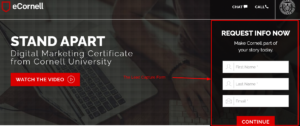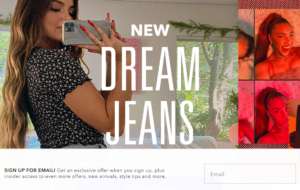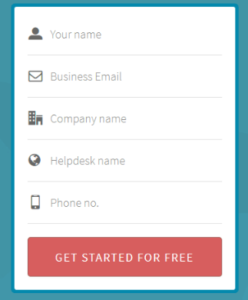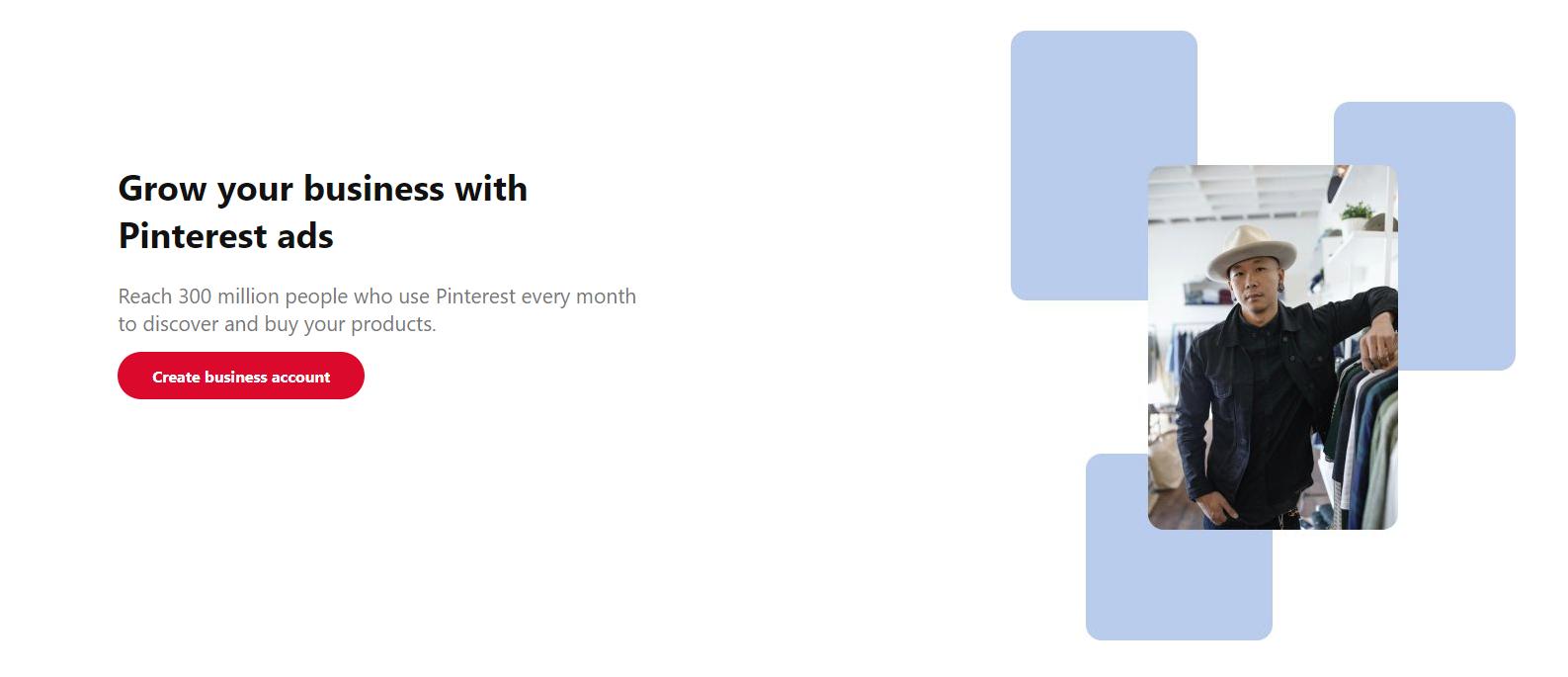Email Marketing Is Still Alive
Email marketing has been around forever. It’s the oldest form of digital marketing and even predates Google AdWords. In the early days of the world wide web (remember when it was called that?), if you wanted to sell a new product or service, acquiring emails from data brokers and then messaging them until they converted was the way to go.
Technology changes fast, though. Today, social media marketing has seemingly eclipsed traditional email lists. With endless options available for advertisers to tweak their ads and target new audiences with data-driven decisions, who can argue?
The amount of money that internet marketers and e-commerce stores have acquired by running simple social media ads is mind-blowing. The concept has been proven effective, and we’re not here to tell you otherwise.
We are here to tell you that email marketing is still a viable strategy. In fact, given the recent COVID-19 pandemic, it stands to flourish now more than it ever has in the past.
You just have to be willing to re-invent the wheel and change your approach to the method.
Today, we’re going to give you the definitive, all-inclusive guide to email marketing for the now. We’ll show you how to change up your traditional strategy, acquire new leads, build up your list, and, most importantly- how to create content that actually converts.
Re-Thinking Traditional Email Marketing
If you listen to many so-called “internet marketing gurus,” then you’ve probably heard that “email marketing is dead.”
To be fair, they do have a point. Namely- traditional email marketing is dead. In 1996, Sabeer Bhatia and Jack Smith released Hotmail, the world’s first fully-functional web-based email platform. Next year, in 1997, Microsoft acquired the company and integrated it into what would become Microsoft Outlook.
All of a sudden, email was free and available to anybody who could access the internet. Previously, it had been limited to college education groups that had the money to afford it. Any business that had an eye to the future quickly hopped on the platform and used it to expand their marketing into the digital world.
At first, it was great. Emails had an incredibly high open-rate. They were brand new, and people hadn’t grown accustomed to them yet.

Then came the age of SPAM- Stupid Pointless Annoying Messages. It didn’t take long before scammers, illegitimate businesses, and even legitimate companies became a nuisance. Users could hardly log in to their accounts without being bombarded by hundreds of SPAM messages.
Eventually, it became such a problem that email platforms introduced SPAM folders designed to filter out messages that were potential ads automatically. While not perfect, the system helped bring more legitimacy to email marketing, and it had a great run through the early 2000s until social came along and revolutionized the marketing forever.
Changing The Game
The thing is- email marketing never actually went away, though. It’s still alive and well. While emails don’t get the same open or click-through rates as they once did, 58% of people still check their emails before interacting with social media or news platforms.
The problem with traditional email marketing is that it has grown stagnant. Most of the company emails that we get in our inboxes are carbon-copy replicas of each other. They’re boring, outdated, and give little to no regard to their actual customers.
It’s almost as if every major company’s email marketing strategy is to push customers away as fast as possible. This is the reason why it’s gotten such a negative connotation in recent years.
The truth, however, is that those few email marketers who actively make an effort to understand their audience and bring value to them are doing better than ever.
The main thing that email marketing lost was humanity. Due to the over-automation of the sales process, businesses gradually lost touch with their audience.
If you can recognize and reverse that trend, however, you’ll be well on your way to running successful email marketing campaigns that not only drive interaction but also convert into sales.
Email Marketing Basics
The concept of email marketing is pretty simple. First, you obtain a list of emails through organic means or by paying a third-party data company for them. Optimally, your mailing list should include people who have already engaged with your brand in addition to people who might be interested in your brand.
The second step is to create a marketing strategy with solidly-defined goals. Each campaign should have a specific target. Examples could include:
- Getting new traffic to your blog, social media pages, or company website.
- Selling a new product or service through promotional content such as coupons.
- Asking existing customers to write online reviews of your product.
- Getting new referrals.
Your goal could be anything, depending on your needs at the time.
The third step is to create email marketing content designed to accomplish your goals. Once you’ve sent the emails out, you watch your metrics to see if your campaign works or if it’s a flunk.
Why Email Marketing?
Still not convinced that email marketing is right for you? Take a look at some of these statistics:
- There are almost 4 billion email users in the world. That’s half of the world’s entire population.
- 78% of email marketers have received increased engagement over the past year.
- On average, companies receive an ROI of 38:1 for every dollar spent on email marketing.
- Email marketing open rates are almost 20%, and the click-through rate is almost 3%.
When it comes to your digital marketing strategy, you should never put all of your eggs in one basket. We’re certainly not suggesting that you should use email marketing as your only strategy. However, when combined with a solid social media marketing strategy and a product that people actually like, it can go a long way towards increasing brand awareness and trust, which always leads to more sales. After all, that’s the entire goal of internet marketing, right?
Step One: Building Your Email Marketing List

Before you begin your campaign, you need to acquire a list of emails to market to. This is likely going to be the hardest part of your strategy, as it will take some time to build a reliable mailing list. The good news is that once you’ve created your list, you’re good to go. The average unsubscribe rate in North America is 0.17%, which means you have to really irritate people for them to blacklist you.
While you can purchase email lists, we won’t be covering that in this guide. Aside from the ethical implications of invading peoples’ privacy and sending them mail that they didn’t agree to receive, it just makes your brand look bad. Additionally, purchased lists tend to be very low-quality leads, don’t convert well, and in most cases, your emails will go straight to the SPAM folder.
Instead, we’ll discuss several of the latest ethical (and more successful) methods to develop your list through organic means, lead magnets, opt-in forms, and previous brand interaction.
List-Building Like a Pro
If you look through the various methods that we’re about to discuss, you’ll see that building your list really comes down to one focal point- exchanging value in return for an email address. It’s as simple as that. Most people have become so used to giving out their email that you often don’t even have to offer much in return.
The question then becomes- what can you offer that’s valuable?
Once you start thinking in these terms, all of the following list-building methods will make perfect sense.
Lead-Capture Forms
If your business operates primarily online, then lead-capture forms are going to be your go-to method for acquiring email addresses. They’re usually a small pop-up form that appears on a webpage asking for the visitors’ email address.

Occasionally, they’ll ask for other details such as their age or name. The more information you can get from your customers, the easier it will be for you to categorize them into separate groups. This is known as “email segmenting.” We’ll get more into this later in the article.
Lead Magnets
Remember how we said that you need to exchange value? This is where your “lead magnet” comes in. The magnet is the thing of value that you are trading for their information. The easiest lead magnet is often a subscription to a newsletter. In exchange for their subscription, they get to be on your weekly mailing list. Your weekly newsletter should include free information, exclusive deals, or thoughtful commentary.
Here’s an example of an effectively-used lead magnet. Whenever the user tries to leave the webpage, they’re prompted to download a free e-book:

It is 2020, though, and newsletters are slowly becoming a thing of the past. While some users still appreciate them, they generally prefer something a little more valuable. Here are some great examples of lead magnets that usually get a great response:
- A free e-book or how-to guide. It doesn’t have to be long- a 5 or 10-page e-book will do the trick. It shows that you’re willing to give away some of your secrets for free and establishes that you are valuable for more than just information.
- A great coupon. If you can offer a promotional coupon for signing up that gives the customer 15% off or more, it will go a long way to establishing trust. Once you get a user hooked on your brand with a low upfront cost, they’ll keep coming back for more.
- A free template. These can be especially good if you’re selling a digital service. Once your customer gets a small taste of the value you offer, they’ll want more.
- Access to a free webinar. With the advent of COVID-19, webinars are more popular than ever. In exchange for their email address, they get to sit in on one of your lectures.
- A free tool. If you sell software, the best lead magnet that you can make is a small free tool or a “lite” version of an existing tool you have.
Feel free to get as creative as you want. The idea is to offer a magnet that doesn’t cost you a lot of money but has the potential to bring them considerable value. By starting out the customer relationship with a free giveaway, you also encourage trust and confidence in your brand. This, in turn, will result in a quality lead. Future open rates, click-through rates, and conversions will be a lot higher than if you just offered a free newsletter.
In-Store Marketing
Old-school marketing is still a viable option as well. If you have a brick and mortar location, consider printing up some flyers that encourage your customers to visit your website and enter their email.
Use the promotional flyer as a sort of coupon. Let them know exactly what they’re getting in return for signing up for your mailing list. This method can work exceptionally well if your demographic is older and less tech-savvy.
POS Email Opt-In

Whether your Point-of-Sale system is a physical register or online, you can set it up to encourage customers to sign up for your mailing list. Most physical POS systems such as Square or Clover encourage customers to enter their email in order to receive their digital receipt. They also save customers’ email addresses if you want to pay for their company’s email marketing services.
Rewards-System
One of the best ways to encourage email signups in 2020 is to offer your customers a digital rewards program. In exchange for their email address, they can opt to receive a frequent shopper discount. This method is especially prevalent in retail stores and restaurants. Not only will that customer shop with you more often, but you’ll be able to add them to your mailing list and send them promotional material whenever you want.
Social Media Lead Captures
Did you know that you can use social media to capture email addresses as well? Whether you’re using Facebook, Instagram, Snapchat, or LinkedIn, each platform provides marketers with a way to promote an ad with the intent of capturing leads. This is done by posting either static or dynamic ads that encourage users to enter their contact information in return for receiving a lead magnet.
The more that you can leverage your existing following to gain more email addresses, the quicker your list-building will be.
The Art of the Lead Capture
No matter which method of lead capture that you choose to work with, the way that you present it to them is everything. You need to use your words or on-site copy to convey the value of your mailing list.

Remember, that customer is probably already a part of numerous other mailing lists. Possibly the last thing that they want is to wake up to is even more “junk” to read through in the mornings. The more that you can do to convince them of the quality of your content before they subscribe, the better.
We already discussed how you can use various lead magnets to drive sign-ups, but that’s only one half of the equation. Your capture needs to inspire trust, and show the potential lead that you’re not trying to waste their time.
Some tips to make your lead captures more appealing are:
- Great visuals. Use an image or a short video clip to present your lead magnet in an appealing manner.
- Wording. Use action words and phrases to drive click-through rates and encourage ad viewers to make impulsive decisions.
- Keep it short. In our fast-paced world, users scroll through their newsfeeds at a mile-a-minute. The quicker that you can get to the point, the better.
Short video clips and quick copy drive more results than long-form lead captures.
When creating your lead capture form, it’s essential that you understand your audience. Put yourself in their shoes and ask yourself, “Would I subscribe to this mailing list based on this ad?”
If you can be honest with yourself, you’ll save a lot of time on wasted lead capture designs.
Segment Your Email List
Now that your mailing list, we should discuss a key strategy for email marketing in 2020. Namely- list segmenting.

This is the key element that separates successful marketing campaigns from SPAM campaigns. Once you learn how to implement it and how to optimize your content for the various segments of your list, your conversion rates will skyrocket.
The concept is incredibly simple- using subscriber data, you “segment” your list into separate groups based on demographic information, interests, location, etc.
At the beginning of the article, we talked about how “humanity” was the missing factor in traditional email marketing. Before email marketing services started implementing list segmenting, the most popular strategy was a “batch and blast.” This entailed writing one piece of email content and then mailing it out to everybody on your list.
While blasting emails like this is incredibly simple, it’s also incredibly spammy. You’re sending the same email to vastly different customers. Sure, some will respond well, but you risk alienating others by your lack of personality.
List segmenting allows you to create custom message campaigns for each group on your list.
For Example:
Imagine that you’re trying to run an email marketing campaign for a retail clothing store that sells both men and women’s clothing.
You want to run a back-to-school special to clear out your summer inventory and prepare for the fall season. So, you decide that you’re going to send out a promotional email to all of your subscribers and let them know that you have a special sale going on.
The trouble is that simply blasting out an email saying that your summer collection is 15% off doesn’t specifically target your subscribers. Sure, it’s a good sale, and you’re bound to get some positive feedback. However, your email will also be ignored by a lot of your subscribers because it looks too much like an advertisement.
Imagine if there were a way to send two separate emails to two key audience demographics:
- One email would target your female subscribers ages 16 to 24. It would use their name, have a softer tone of voice, and showcase some photos of your best ladies’ clothing. You might even include a link to the ladies’ section of the website to order directly online without having to navigate through all of the other pages on your site.
- The other email would target your male subscribers ages 16 to 24. Like the previous email, it would use their name in the email subject line, but the sales tone would be different. Your sales copy would sound athletic, energetic, and masculine. You could showcase some new jeans, hoodies, belts, etc.
By segmenting two key groups in your mailing list and creating custom content for them, you’re sending a very clear message- our business cares enough about you to send a personalized email for something you’re actually interested in.
The principle applies no matter what business you want to apply it to. Pet stores segment cat owners from dog owners, marketing companies segment retail store owners from eCommerce store owners, and colleges segment students interested in art majors from students interested in business majors.
How Do I Segment My Mailing List?
While the appeal is obvious, a lot of first-time email marketers have no idea how to segment their mailing lists. There are two main methods which you’ll want to use together:
- Utilize data from your email marketing software.
- Acquire data through targeted lead generation forms.
The first method is fairly simple and hands-off. Most high-quality email marketing services implement strategies designed to track subscribers’ activity on your site. Once a subscriber opens your email and performs a “click-through” to your web page, cookies track their activity on the site.
Let’s go back to our previous example with the clothing store:
Say that you have an email address on your mailing list with relatively little data other than their name. Once they click-through to your webpage, your mailing service will begin tracking them. It might take note that they spend more time in the ladies’ section of your site. It might also notice that they spend more time looking at the outerwear section, indicating that they have an interest in hoodies and jackets as opposed to t-shirts.
Your mailing service will then be able to attach the following categorical data to that email address: [email protected] is a female who is interested in the outerwear section of your website.
You can then use all of this new user data to further segment your mailing list into specific groups and create the kind of personalized email promotions that drive sales.
The second method requires a little bit more effort on the marketer’s part but provides more data up-front. This means that you can start segmenting your email lists without having to wait on your email marketing service to do the automated work for you.
To accomplish this, you just need to add extra data fields to your lead capture form. In addition to entering their email address, you can design your lead capture form to obtain extra information such as their full name, date of birth, gender, or even the city that they live in.
Here’s a good example of a web page lead capture:

Luckily, lead capture forms on social media make this process a lot easier since the social platform already has the users’ public information. Once they fill out the form, you can set it to automatically take into account whatever information the user has chosen to make public such as place of work, pages and topics they’re interested in, their favorite music, home city, etc.
Once this lead is acquired, the data is then transferred into your mailing service and categorized.
Step Two: Create Your Email Marketing Strategy
Now that you know how to go about acquiring your mailing list, it’s time to talk strategy. In this section, we’re going to discuss the odds and a few strategies for leveling those odds in your favor.
The tighter that your marketing strategy is, the more you’ll be able to leverage your subscribers into profitable clients.
Email Marketing is a Numbers Game

If you’re so inclined, you can be proactive, and kick-off your email marketing campaign before you have a massive amount of followers. You don’t need to wait until you have a certain number to take action. The more practice that you can get in upfront, the better success you’ll have when you are working with a 5,000+ subscriber list.
At the end of the day, however, it is a numbers game. The statistics we listed above stated that the average email open rate in North America is around 20%, and the average click-through rate in North America is just under 3%. Depending on your industry and the quality of your sales copy, your actual conversion rate could be anywhere between 1% and 5%.
Let’s be optimistic and say that it’s 5%.
Here are some basic calculations that you could run given that information:
- For every 5000 emails that you send out, around 1000 will be opened (20% open rate).
- For every 1000 emails that are opened, around 30 people will click-through to your website (3% click-through rate).
- For every 30 click-throughs, you’ll average 1.5 sales (at an excellent 5% conversion rate).
As you can see, the more email addresses in your list, the more you can scale your business. If you want to increase your conversion rate, then you’ll need to generate higher-quality leads. The more data that you have on your email subscribers, the more personalized you can make their content, and the higher chance of converting them.
Understanding Your Target Audience
One of the first considerations to take into account when creating a new marketing campaign is your target audience. As a brand, you need to figure out who could benefit from your product and your highest-traffic demographics.
Depending on your business model, you might even have multiple target audiences. These target audiences would be broken down by interest in certain specific products and services. For instance, if you’re a massive online clothing retailer, you’ll have separate target audiences for men’s clothes, women’s clothes, young adults, athletes, corporate attire, etc.
If you’ve already begun segmenting your emails as discussed in the previous section, you should already have some great data to go on. However, if you’re just starting out with limited information on your key demographics, here are some questions you should ask yourself and your team:
- Does my business cater to one or two key groups or multiple different target audiences?
- What does the average client look like? What are their values? What type of service do they prefer?
- Are my clients primarily online shoppers, retail shoppers, or a mix of both?
- What is the average amount of money spent by my customers per transaction?
- Which items do I sell out of the quickest?
- Based on our highest demographic group, what type of content converts the best?
If you have a pre-existing business model, then you probably already have answers to these questions. However, they should always be revisited before you begin a new marketing campaign or start using a different platform. Different people are more or less active on different platforms. So, while your Instagram campaign might be directed at Generation Z users, you could find that your email marketing campaign is more successful when directed at Millennials 28-35.
If you didn’t take the time to do the research and collect the data, then you would never know. When it comes to marketing, you want to limit the “shots in the dark” that you take. Data is king, and knowing your audience is paramount to successful email campaigns.
Ensure Your Emails Are Mobile-Friendly
Today, most people check their email accounts on their cell phones or mobile devices. The one exception to this rule is when it comes to business-related emails. Often times, work emails are primarily checked from a computer workstation, as many employees try not to bring their work home with them.

Nine times out of ten, however, your average viewer is going to check emails on their phone. This means that it’s more important than ever to ensure that your content is user-friendly and optimized for viewing in a mobile format. Users shouldn’t have to scroll side to side or read long, 8-line chunk paragraphs.
As long as you’re using a standard email marketing service or platform, though, this should all be done automatically. Still, it’s always a good idea to send out a few test emails to your team to make sure.
Don’t Forget About Your Landing Page
Aside from your emails, you also need to make sure that your website is mobile-optimized as well. Imagine opening a clean, well-written email only to be redirected to a website that looks like it was made in 2001. Whatever trust that you developed in the brand from the email would be immediately destroyed upon seeing their landing page.
Again, if you’re using a standard website builder like Shopify, Squarespace, Weebly, Wix, etc., your site should be optimized for various devices. These optimization problems mainly come out when you’re dealing with websites that have been built from scratch using pure code. It’s not uncommon for amateur web developers to forget to code in screen optimization conditions.
Use Automation

Unlike most social media marketing, you’re going to need to use automation software for your email marketing strategy. The only instance in which you wouldn’t need automation is if your mailing list is less than 20 people, and you don’t mind writing each person individually.
Due to their wide usage, most email marketing platforms are fairly affordable, with some plans starting as low as $10/month. With entry prices that cheap, there’s no excuse to do things the old-fashioned way. You’ll only be wasting time and energy.
Here are some of the benefits of using software to automate your email marketing:
- Mailing list segmentation. As discussed earlier, your email software automatically tracks in-site activity to categorize your list into segmented groups.
- Better metrics. Automation software will track exactly how many people open your emails, how many of them click-through to your website, and how many of them convert into a sale.
- Personalized fields. You’ll be able to create personalized [name] fields and more, which gives your messages the personal touch that they need to not seem spammy.
- Scheduled messaging. Have a busy week ahead of you? Automation software allows you to write out emails to your various segments at the beginning of the week and will automatically send them out at schedules dates and times. This also helps to ensure your messages are sent out during the times of day that your target audience is most active online.
- Safe storage on the cloud. No matter if you shut down one business and open another, you’ll still have all of your email contacts saved and can use them for marketing other businesses that you may be involved in.
- SPAM bypass. Email marketing services are often designed in a manner that allows in-platform messages to bypass traditional SPAM filters.
Easy unsubscribes. Email marketing platforms make it easy for users to unsubscribe from your mailing list with the click of a button. By offering an easy unsubscribe feature, your mailing list will have heightened trust in your brand and be more willing to sign up for your mailing list in the first place.
One of the most popular email marketing platforms is Mailchimp, but there are plenty of options for you to choose from. Do some research and take some time to read through customer reviews in order to find the right one for you. Many services may even offer a free trial period.
Goal Setting and Key KPIs
Once your mailing software is in place, you need to set clear marketing goals and understand the Key Performance Indicators associated with them. The goal of each email marketing campaign will be different, so make sure you define a clear goal. This will ensure that your copy stays on track and that you’re marketing to the correct segment in your mailing list.
Once you start sending out your emails, your marketing software will track several important KPI’s, which you’ll use to determine the effectiveness of your marketing campaign. Let’s take a couple of minutes to discuss how to interpret them.
Open Rate
Your email open rate is one of the first metrics to take into account. This is the percentage of people who click on your email and read it. The average open rate is around 20%, so for every 100 emails you send out, 20 people should open them.
If your open rate is higher, then you’re running a great campaign! If your open rate falls below 15%, consider tweaking your email or your target audience until it gets closer to 20%.
Click-Through Rate
The next important metric is your click-through rate. This measures how many people, once they’ve opened your email, click on the associated link and are redirected to your landing page. Click-through rates in North America are around 3%. This can vary depending on the industry you’re in.
If your click rate is 3-5%, then your emails are good quality, and you should keep up the good work. If it falls below 2%, consider making some adjustments.
Conversion Rate
Your conversion rate will be similar to your click-through rate. Your goal should be 5%. That means for every 100 click-throughs you get to your site, 5 of them will make a purchase. Don’t be disappointed if this number is closer to 3-4%.
However, if it drops below, you might need to change the layout of your website, product placement, prices, deals, etc. The conversion rate is almost entirely based on your brand and website appearance.
Develop an Email Marketing Schedule

Now that you understand your goals and have a basic understanding of the metrics, you’ll need to develop a marketing schedule. In general, you should aim for each email subscriber to receive a minimum of 2 emails per month. Any less than this and you risk being forgotten about.
Many businesses email subscribers 5-6 times per month. If you’re offering considerable value in your emails, most people won’t mind this. You want to strike a good balance between staying in your customers’ field of view and not spamming them.
If they start getting emails every other day, they’ll be far more likely to ignore your messages, or worse- unsubscribe. Daily emails could also get your messages blacklisted and sent to the SPAM folder, especially if they are continually ignored and never opened.
This is where the scheduling feature of your mailing service really comes in handy. You can set parameters and message scheduling to ensure that you don’t become a pest.
Another important consideration is the time of day that you send out emails. According to this independent study, emails receive the highest interaction between 9 and 11 am in the morning. Over 50% of all other emails are opened at various times throughout the workday.
When scheduling email blasts, you’ll also want to consider the timezone that your audience is located in. You may want to segment your list by certain timezones so that your message appears at the right time.
If it sends too early in the morning, you risk that your message falls to the bottom of their inbox. If it is too late, you risk that they won’t check their email again until the next morning, by which time your message will last in their inbox.
Step Three: Convert With Your Words
The final step to creating a successful email marketing campaign is to write your copy. The better written your emails are, the higher your open, click-through, and ultimately conversion rates will be.
In this section, we’re going to talk about everything you can do to make your emails pop and stand out from the hundreds of other messages in your subscribers’ inbox.
Email Marketing Templates
Once you’ve got some good data and feedback from existing campaigns, it’s good to create a few custom email templates for future use. This will ultimately help to streamline the process and ensure fewer errors.
You can also download free email marketing templates on the internet. If you don’t have previous experience copywriting, or a dedicated copywriter, then this is a great place to start. Templates will help you with your spacing, wording, and make sure that your ideas progress with a natural flow.
It’s important not to rely on pre-made templates too heavily, though. If every message you send is direct from a template, then you run the risk of all of your messages sounding too similar to each other or worse- the same as other companies using the same templates.
How to Write Good Copy
Ultimately, the best way to improve your metrics is to write engaging copy. Spend an afternoon scrolling through the promotional messages in your inbox. Take note of the messages that capture your attention, as well as the messages that you ignore.
Let’s talk about some of the best practices for writing high-quality copy that converts.
Give Value

People are searching for value. If your message can be the one email that genuinely makes them feel better, gives them a great deal, or shows them that you care, your click-through and interaction will be greatly improved.
Your Subject Line is Everything
The first thing that your subscribers see is the subject line of your email. If your subject is too sales-oriented, spammy, or cliche, your message is liable to be deleted before it’s ever read. Here are some great tips for writing an engaging subject line that will attract the viewer’s eye and encourage them to read what you have to say.
Visual Marketing
They say that a picture is worth a thousand words. Including a short video clip, GIF, or an image of what you’re trying to sell goes a long way to driving interest. Humans are visual creatures, and when they see a bunch of words with no images to give context, they tend to ignore the words altogether.
You can always use some free stock images, but in general, creating your own graphic design content is the best way to make your message stand out. Plus, it makes your brand look more professional.
Make it Personal
Remember, your subscribers don’t always want another ad (or at least an obvious ad). Sometimes, the best strategy is to use your message to convey a personal story. Talk about a hard time you had, give them a comeback story, make their day brighter. Towards the end of the message, show them how your product or service can help them make a comeback or gain a competitive edge.
Use Punctuation!
When it comes to writing copy, punctuation creates emotion. The chances are that before you read the previous subheadings, your eyes saw this particular heading with the exclamation “!” mark. You don’t want to overuse them and appear fake, but a few well-placed exclamations or questions throughout your message help the reader to build an emotional connection to what you’re saying.
Make it Easy to Read (aka spacing)
Nobody wants to read a giant block of words. It’s hard on the eyes and causes strain and frustration- this is not the emotion that you want to be associated with your content. Be considerate and space your paragraphs out. Try to keep your paragraphs under 4 lines, and your sentences shorter than 2 lines.

Final Thoughts
Email marketing isn’t dead; it’s just evolved. The people who claim that it doesn’t work are using outdated methods and seeing no results. The business that knows how to constantly evolve their marketing strategy to fit in with the times will always win.
Email marketing in 2020 should focus on building trust and relationships with customers. In a world full of pesky, uncaring advertisers, be the one who gives actual value. Once you do that, your subscribers will buy whatever it is that you’re selling.
So, what are you waiting for? Go out there, start building your list, and make it your goal to boost your sales this year in a massive way.
LEARN MORE ABOUT US
Payperlead.com is a full service Performance Agency that helps you acquire customers at scale. The best part? You don't pay unless we're able to get you results.




COMMENTS
Deprecated: File Theme without comments.php is deprecated since version 3.0.0 with no alternative available. Please include a comments.php template in your theme. in /www/payperlead_967/public/wp-includes/functions.php on line 5613
Warning: Undefined variable $post_ID in /www/payperlead_967/public/wp-content/themes/payperlead/single-post.php on line 94